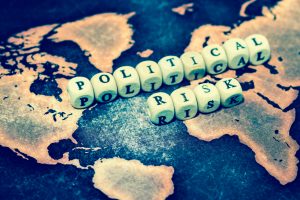Central Banks Hedging against Political Risk with Gold
The comments above & below is an edited and abridged synopsis of an article by Rurika Imahashi
Central banks around the world are adding to their gold stashes, particularly in emerging markets, as they try to shore up their currencies amid rising geopolitical tensions and to stave off US economic pressure.
 Central bank gold holdings have risen by about 7% over the 5 years to 2016. Last year, central banks were net buyers of gold for the 7th year in a row. As of July 31, they held some 33,400 tons of gold reserves.
Central bank gold holdings have risen by about 7% over the 5 years to 2016. Last year, central banks were net buyers of gold for the 7th year in a row. As of July 31, they held some 33,400 tons of gold reserves.
Monetary authorities have been increasing their reserves of the precious metal mainly to defend their currencies. Analysts predict the trend will continue for a while.
Russia, the world’s 6th-largest gold holder, was one of the major purchasers over the period. The Russian central bank expanded its gold reserves by 12% on the year to 1,729.4 tons at July 31.
Imahashi discusses gold with respect to Kazakhstan and Turkey, as well as China. It is the world’s 5th-largest gold holder, and has been building up its reserves since 2009. It is expected to bring them up to Germany’s level, the 2nd-largest gold holder, with over 3,000 tons of reserves.
China’s purchases of gold from abroad fueled dollar buying for trade settlement. Now it seems to have ended its gold-buying spree to protect the yuan. With the yuan no longer weakening, China has resumed building up its foreign reserves through purchases of foreign assets such as US Treasuries.
Since the Asian currency crisis of 1997, many emerging markets have tried to reduce their dependence on the dollar for foreign reserves.
The crisis over North Korea’s nuclear weapon and missile programs is likely to accelerate the trend, as holding gold helps countries like China and Russia ease economic pressure from the US.
